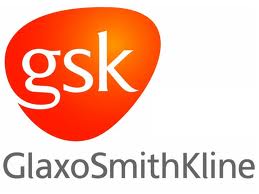
葛兰素史克(GSK)9月2日宣布,黑色素瘤新药Tafinlar(dabrafenib)已获欧盟委员会(EC)批准,作为一种口服靶向药物,用于携带BRAF V600E突变的手术不可切除性黑色素瘤或转移性黑色素瘤成人患者的治疗。
Dabrafenib是一种激酶抑制剂,靶向于BRAF蛋白,这是机体内一个生物信号通路中的关键元件,该信号通路调节细胞的正常生长和死亡,包括皮肤细胞。
今年5月,Tafinlar及另一种黑色素瘤新药Mekinist(trametinib)均获得了FDA的批准。Tafinlar为BRAF抑制剂,作为一种单药口服胶囊,适用于携带BRAF V600E突变的手术不可切除性黑色素瘤或转移性黑色素瘤成人患者的治疗。Mekinist为首个MEK抑制剂,作为一种单药口服片剂,适用于携带BRAF V600E或V600K突变的手术不可切除性黑色素瘤或转移性黑色素瘤成人患者的治疗。
转移性黑色素瘤中,约有一半携带BRAF突变,该异常突变能促使黑色素瘤生长和扩散,其中BRAF V600E突变约占转移性黑色素瘤所有BRAF V600突变的85%,BRAF V600K突变约占转移性黑色素瘤所有BRAF V600突变的10%。(生物谷Bioon.com)
英文原文:GSK receives marketing authorisation from the European Commission for Tafinlar? (dabrafenib), an oral treatment for unresectable or metastatic melanoma in adult patients with a BRAF V600 mutation
GlaxoSmithKline plc announced today that the European Commission has granted marketing authorisation for Tafinlar? (dabrafenib) as an oral targeted treatment indicated in monotherapy for unresectable melanoma (melanoma that cannot be removed by surgery) or metastatic melanoma (melanoma which has spread to other parts of the body) in adult patients with a BRAF V600 mutation.1 Dabrafenib is not indicated for the treatment of patients with wild-type BRAF melanoma. Before taking dabrafenib, patients must have confirmation of a BRAF V600 mutation using a validated test.1
"Today's authorisation of Tafinlar? represents an important step in GSK's ongoing effort to bring new treatment options to cancer patients, especially as we have brought it to market in less than five years after our initial testing," said Paolo Paoletti, M.D., President, GlaxoSmithKline Oncology. "With this new personalised medicine, we hope to make a meaningful difference in the lives of appropriate patients with metastatic melanoma; a devastating disease and a cancer with one of the lowest survival rates."
Dabrafenib is a kinase inhibitor that targets BRAF, a key component of a biological pathway in the body that regulates the normal growth and death of cells, including skin cells.2 Theavailability of a diagnostic test allows the identification of patients with unresectable or metastatic melanoma who have the BRAF V600 mutation, and therefore are eligible to receive this therapy.
About Melanoma and Metastatic Melanoma
Melanoma is the most serious type of skin cancer and causes 75 per cent of skin cancer-related deaths. 3 If found early and confined to the skin, melanoma can usually be removed with surgery, but sometimes it can spread to other parts of the body, a process referred to as metastasis.4 Typically, less than 5 per cent of all newly incident melanoma patients present with metastatic disease. A BRAF gene mutation is seen in 50-70 per cent of cutaneous melanoma cases.5
According to the World Health Organisation, 200,000 people worldwide were diagnosed with melanoma in 20086, a figure that is predicted to increase to 233,000 by 2015.6 The median and one-year survival rates of patients with metastatic melanoma, treated with chemotherapy, are 12 months and 49 per cent, respectively. 7
Tafinlar? (dabrafenib) Clinical Data
The marketing authorisation for dabrafenib is based on results from several multicentre global trials. One of these trials was a Phase III study, BREAK-3, in which treatment with dabrafenib was compared to dacarbazine (chemotherapy) in 250 previously untreated patients with BRAF V600E mutation-positive unresectable or metastatic melanoma. At the pre-specified analysis of BREAK-3, from December 2011, dabrafenib reduced the relative risk of disease progression or death by 70 per cent compared to dacarbazine (95 per cent CI: 0.18, 0.51, p<0.0001). Study data showed a median progression-free survival of 5.1 months with dabrafenib (95 per cent CI; 4.9, 6.9) compared to 2.7 months for dacarbazine (95 per cent CI: 1.5, 3.2) (2011 cut-off data).
In a post-hoc analysis from June 2012, dabrafenib reduced the relative risk of disease progression or death by 63 per cent compared to dacarbazine (95 per cent CI: 0.24, 0.58, P<0.0001). The data showed a median progression free survival of 6.9 months (95 per cent CI: 5.2, 9.0) compared to 2.7 months for dacarbazine (95 per cent CI: 1.5, 3.2). A further post-hoc analysis, from December 2012, showed overall survival at 12 months was 70 per cent with dabrafenib, compared with 63 per cent for dacarbazine (HR = 0.76, 95 per cent CI: 0.48, 1.21).1
Patients with melanoma driven by BRAF mutations other than V600E were excluded from the BREAK-3 trial and with respect to patients with the V600K mutation in single arm studies, the activity appears lower than in V600E tumours. 1
Other trials included:
· A Phase II study, BREAK-2, a multicentre, single-arm, open-label study of 92 patients with BRAF V600E or V600K mutation-positive metastatic melanoma who had not received prior treatment or were previously untreated or failed at least one prior systemic therapy.8
· A Phase II trial, BREAK-MB, a prospective open-label study of 172 BRAF V600 mutation-positive melanoma patients with brain metastases, with and without prior local therapy. Brain metastasis, which occurs when cancer has spread to the brain,is one of the most common and challenging complications for metastatic melanoma patients.9 More than 60 per cent of late-stage melanoma patients will develop brain metastases.9
About Tafinlar? (dabrafenib)
Tafinlar? (dabrafenib) targets BRAF, a key component of the MAPK (mitogen-activated protein kinase) pathway. In many types of melanoma, a mutated BRAF protein on the MAPK pathway disrupts normal cellular regulation and promotes increased cell production.2 Dabrafenib binds to the mutated BRAF protein, which may lead to an inhibition of oncogenic signalling, thus inhibiting the proliferation of tumour cells.
In the European Union (EU), dabrafenib is now licensed in monotherapy for the treatment of adult patients with unresectable or metastatic melanoma with a BRAF V600 mutation as detected by a validated test.1 Dabrafenib is also licensed in the U.S, Canada and Australia.
Safety Information
Toxicities with precautions for use include pyrexia (fever, including severe fever), cutaneous squamous cell carcinoma, new primary melanoma, non-cutaneous malignancy, renal failure, pancreatitis, uveitis (an inflammation of the middle, pigmented, vascular structure of the eye), and QT prolongation (a disorder of the heart's electrical system).
The safety profile of dabrafenib is based on data from five clinical monotherapy studies and included 578 patients with melanoma. The most frequently occurring adverse drug reactions (ADRs)



